Dyshomeostatic modulation of Ca2+-activated K+ channels in a human neuronal model of KCNQ2 encephalopathy
- PMID: 33544076
- PMCID: PMC7864629
- DOI: 10.7554/eLife.64434
Dyshomeostatic modulation of Ca2+-activated K+ channels in a human neuronal model of KCNQ2 encephalopathy
Abstract
Mutations in KCNQ2, which encodes a pore-forming K+ channel subunit responsible for neuronal M-current, cause neonatal epileptic encephalopathy, a complex disorder presenting with severe early-onset seizures and impaired neurodevelopment. The condition is exceptionally difficult to treat, partially because the effects of KCNQ2 mutations on the development and function of human neurons are unknown. Here, we used induced pluripotent stem cells (iPSCs) and gene editing to establish a disease model and measured the functional properties of differentiated excitatory neurons. We find that patient iPSC-derived neurons exhibit faster action potential repolarization, larger post-burst afterhyperpolarization and a functional enhancement of Ca2+-activated K+ channels. These properties, which can be recapitulated by chronic inhibition of M-current in control neurons, facilitate a burst-suppression firing pattern that is reminiscent of the interictal electroencephalography pattern in patients. Our findings suggest that dyshomeostatic mechanisms compound KCNQ2 loss-of-function leading to alterations in the neurodevelopmental trajectory of patient iPSC-derived neurons.
Keywords: AHP; KCNQ2; M-current; burst-suppression; disease modeling; dyshomeostatic; epileptic encephalopathy; excitatory neurons; homeostatic plasticity; human; human iPSCs; neuroscience; potassium channel; regenerative medicine; stem cells.
© 2021, Simkin et al.
Conflict of interest statement
DS, KM, CV, RD, BB, BP, JO, MF, GR, PP, LL, SL, JM, AG, EK No competing interests declared
Figures
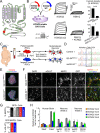

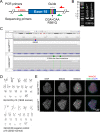
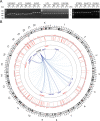


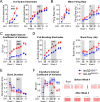

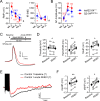



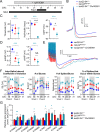
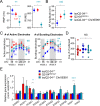
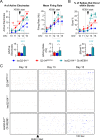



Similar articles
-
Machine Learning Resolves Functional Phenotypes and Therapeutic Responses in KCNQ2 Developmental Epileptic Encephalopathy iPSC Models.bioRxiv [Preprint]. 2025 Jul 31:2025.07.26.666977. doi: 10.1101/2025.07.26.666977. bioRxiv. 2025. PMID: 40766585 Free PMC article. Preprint.
-
Infantile spasms and encephalopathy without preceding neonatal seizures caused by KCNQ2 R198Q, a gain-of-function variant.Epilepsia. 2017 Jan;58(1):e10-e15. doi: 10.1111/epi.13601. Epub 2016 Nov 9. Epilepsia. 2017. PMID: 27861786 Free PMC article.
-
Epilepsy-Associated KCNQ2 Channels Regulate Multiple Intrinsic Properties of Layer 2/3 Pyramidal Neurons.J Neurosci. 2017 Jan 18;37(3):576-586. doi: 10.1523/JNEUROSCI.1425-16.2016. J Neurosci. 2017. PMID: 28100740 Free PMC article.
-
Mouse models of Kcnq2 dysfunction.Epilepsia. 2022 Nov;63(11):2813-2826. doi: 10.1111/epi.17405. Epub 2022 Sep 27. Epilepsia. 2022. PMID: 36047730 Free PMC article. Review.
-
The Role of Kv7.2 in Neurodevelopment: Insights and Gaps in Our Understanding.Front Physiol. 2020 Oct 28;11:570588. doi: 10.3389/fphys.2020.570588. eCollection 2020. Front Physiol. 2020. PMID: 33192566 Free PMC article. Review.
Cited by
-
iPSC-derived models of PACS1 syndrome reveal transcriptional and functional deficits in neuron activity.Nat Commun. 2024 Jan 27;15(1):827. doi: 10.1038/s41467-024-44989-7. Nat Commun. 2024. PMID: 38280846 Free PMC article.
-
Human In Vitro Models of Epilepsy Using Embryonic and Induced Pluripotent Stem Cells.Cells. 2022 Dec 7;11(24):3957. doi: 10.3390/cells11243957. Cells. 2022. PMID: 36552721 Free PMC article. Review.
-
Assessment of Biochemical and Neuroactivities of Cultural Filtrate from Trichoderma harzianum in Adjusting Electrolytes and Neurotransmitters in Hippocampus of Epileptic Rats.Life (Basel). 2023 Aug 28;13(9):1815. doi: 10.3390/life13091815. Life (Basel). 2023. PMID: 37763219 Free PMC article.
-
Toward the use of novel alternative methods in epilepsy modeling and drug discovery.Front Neurol. 2023 Aug 31;14:1213969. doi: 10.3389/fneur.2023.1213969. eCollection 2023. Front Neurol. 2023. PMID: 37719765 Free PMC article. Review.
-
Modeling and correction of protein conformational disease in iPSC-derived neurons through personalized base editing.Mol Ther Nucleic Acids. 2024 Dec 21;36(1):102441. doi: 10.1016/j.omtn.2024.102441. eCollection 2025 Mar 11. Mol Ther Nucleic Acids. 2024. PMID: 39877004 Free PMC article.
References
-
- Afawi Z, Oliver KL, Kivity S, Mazarib A, Blatt I, Neufeld MY, Helbig KL, Goldberg-Stern H, Misk AJ, Straussberg R, Walid S, Mahajnah M, Lerman-Sagie T, Ben-Zeev B, Kahana E, Masalha R, Kramer U, Ekstein D, Shorer Z, Wallace RH, Mangelsdorf M, MacPherson JN, Carvill GL, Mefford HC, Jackson GD, Scheffer IE, Bahlo M, Gecz J, Heron SE, Corbett M, Mulley JC, Dibbens LM, Korczyn AD, Berkovic SF. Multiplex families with epilepsy: success of clinical and molecular genetic characterization. Neurology. 2016;86:713–722. doi: 10.1212/WNL.0000000000002404. - DOI - PMC - PubMed
-
- Bardy C, van den Hurk M, Kakaradov B, Erwin JA, Jaeger BN, Hernandez RV, Eames T, Paucar AA, Gorris M, Marchand C, Jappelli R, Barron J, Bryant AK, Kellogg M, Lasken RS, Rutten BP, Steinbusch HW, Yeo GW, Gage FH. Predicting the functional states of human iPSC-derived neurons with single-cell RNA-seq and electrophysiology. Molecular Psychiatry. 2016;21:1573–1588. doi: 10.1038/mp.2016.158. - DOI - PMC - PubMed
Publication types
MeSH terms
Substances
Grants and funding
LinkOut - more resources
Full Text Sources
Other Literature Sources
Medical
Research Materials
Miscellaneous

